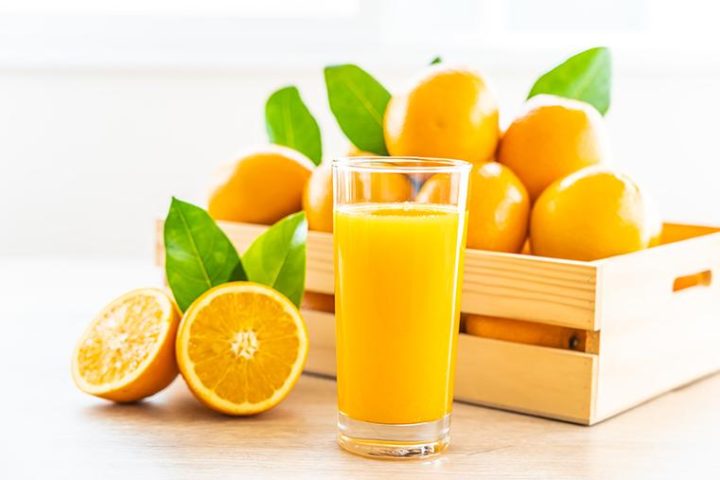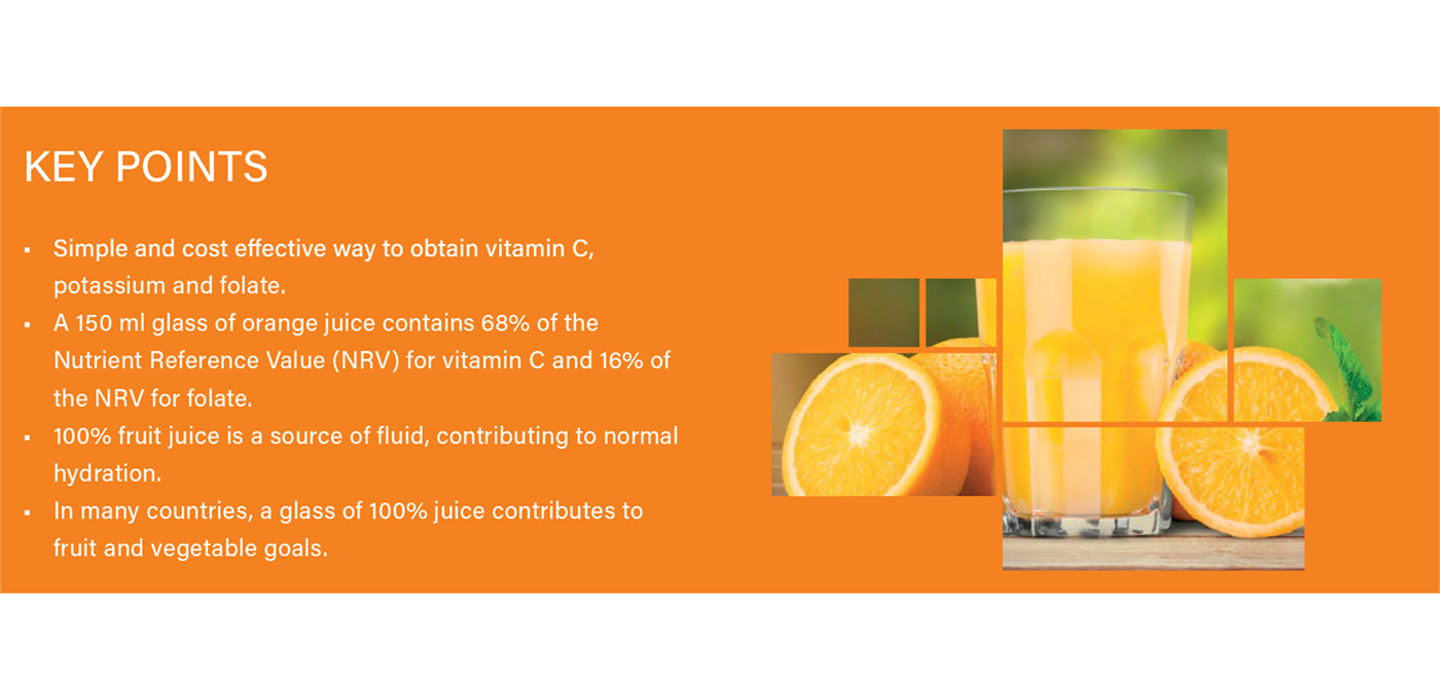Fruit juice across the lifecycle: older people

Fresh orange juice for drink in glass on wooden table - Healthy food concept

NUTRITION REQUIREMENTS AND CHALLENGES
Older people can be healthy and vigorous, or may require additional support. However, according to the UK Office of National Statistics, adults are living longer but are still spending almost one fifth of their life in ill-health. Issues which affect nutritional status include:
Obesity – 66% of people aged 65-74 years and 59% of people aged ≥ 75 years have a body mass index in excess of 25, putting them in the overweight or obese categories.
Malnutrition – This can range from 10% of independently living older persons to 50% of people in hospitals or care homes, not including the greater numbers at risk from developing malnutrition. Malnutrition includes calorie/protein deficit as well as micronutrient deficit due to malabsorption or inadequate dietary intakes.
Disability – Physical and/or cognitive disability can limit access to a healthy diet through difficulties getting out to shop for food, being able to cook meals, or to eat independently.
Disease – Either the condition itself or the medication/treatment can influence appetite, saliva flow, taste sensitivity and mood state. Specialist diets can be costly or difficult to access.
Hydration – Older people may restrict their fluid intake, for example due to lower thirst sensitivity or concerns about incontinence. This may lead to poor hydration. Oral health – Poor dentition and infections limit the ability to eat a range of foods.
100% FRUIT JUICE: BENEFITS FOR OLDER PEOPLE
100% ‘pure’ juice is made by squeezing or crushing fruit. This means that the nutritional composition reflects that of the fruit used in the processing. Nutrient values are similar whether juice is ‘from concentrate’ or ‘not from concentrate’. It is prohibited by European law to add sugars, or any other ingredient, to 100% fruit juice regardless of the production method. Juice from concentrate is an inexpensive option for older people on a fixed budget.
The nutritional composition of 100% orange juice per 100 g is shown below. One 150 ml glass contains 60 kcal (calories), 13.6 g of naturally occurring sugars and 55 mg of vitamin C (Nutrient Reference Value is 80 mg). Values in blue represent official ‘source of’ claims that can be made in Europe.

The nutrients found in 100% fruit juice have recognised roles in supporting normal health as per EU authorised health claims.
- Vitamin C contributes to the protection of cells from oxidative stress and supports normal immune function.
- Vitamin C also contributes to normal collagen formation (important for bones and skin) and improves the absorption of non-haem iron, which helps to support normal iron status.
- Folate reduces tiredness and fatigue as well as having a role in normal psychological function.
- Folate also contributes to normal homocysteine metabolism. High homocysteine levels have been associated with a greater risk of heart disease.
- Potassium helps maintain normal blood pressure and contributes to normal muscle function.
- 100% orange juice has significantly more favourable effects on fat mass and glucose/insulin control compared with a sugarsweetened soft drink, probably due to its lower glycemic index and higher nutrient content.
- Drinking 500 ml 100% orange juice daily, as part of a reduced calorie diet, was more effective at lowering insulin, insulin resistance (HOMA), total cholesterol, low density lipoprotein cholesterol and C-reactive protein than a reduced calorie diet alone. Weight loss and fat loss were similar between the two diets over 12 weeks. The diet containing 100% orange juice was significantly higher in folate and potassium than the control diet, but no other significant energy and nutrient differences were found.
INCLUDING FRUIT JUICE IN THE DIET
Depending on your country’s guidelines, a portion of 100% fruit juice can be 150-250 ml per day (around one small glass) and counts towards fruit and vegetable targets.
As vitamin C enhances the bioavailability of non-haem iron (for example, from fortified foods, supplements and green leafy vegetables), fruit juice is best consumed with a meal. Surveys suggest that low iron status is an issue for elderly populations.
Older people with limited dentition may find it difficult to chew fruit. In these cases, it may be beneficial to increase the daily intake of 100% fruit juice to two or three small glasses, or create smoothies using whole fruits, vegetables and natural yogurt. This can also be an option for elderly and those with disabilities who experience difficulties cutting or peeling fruit.
Grapefruit juice is known to interact with some medications, such as statins, and drugs for impotence, arrythmia and hypertension, so ensure that patients are aware of this and can check with their general practitioner.
TIPS FOR PATIENTS
Fruit Juice Matters has created a linked one-page leaflet, Why fruit juice? FOR OLDER PEOPLE, which you may find useful to give to your patients. Click hereto download a copy.

